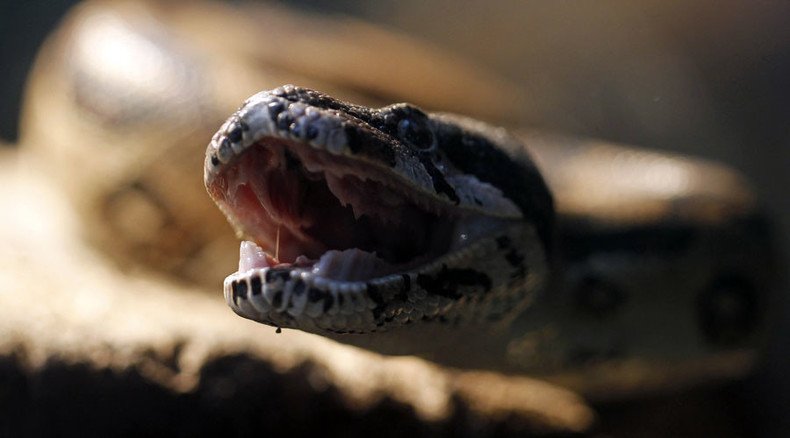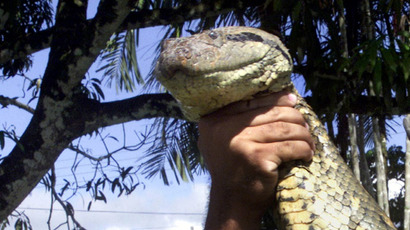Boas don’t choke prey, stopping blood flow is kill method, study says

American biologists have discovered that boa constrictors don’t ‘suffocate’ their prey, but instead cause blood circulatory arrest, which leads to dysfunction in vital organs and eventual death.
Scientists directed by Associate Professor of Biology Scott Boback from Dickinson College in Carlisle, Pennsylvania, have shattered the myth that boas suffocate their prey.
The article, ‘Snake constriction rapidly induces circulatory arrest in rats’, was published this week in the Journal of Experimental Biology.
Research into the constriction effect on the cardiovascular function of rats revealed that death is caused by blood circulatory arrest, which contradicts the widely spread opinion that boa constrictors strangle their victims.
WATCH: Boa constrictor cuts off rat’s blood supply in record time https://t.co/JUqL967BIUpic.twitter.com/dOy6grfyVX
— Michael Slezak (@MikeySlezak) July 23, 2015The pressure is so powerful that once the boa squeezes its victim, it halts blood flow in a matter of seconds. This means there is no oxygen coming to the brain and the prey’s organs shut down one by one rather quickly, enabling the snakes to kill prey larger than they are.
To determine this, researchers sedated some rats and tagged them with electrocardiogram sensors and blood pressure catheters before feeding them to both wild and hand-raised boa constrictors.
While the snakes devoured their victims, the scientists received data showing blood circulation was shut down very quickly, in a matter of seconds, while the rats continued to gasp for air until their demise.
“I remember being in the room and the students were looking at the data in disbelief that it happened that fast,” Gizmodo cited Boback. “We could see the arterial pressure go down, the venous pressure go up and we could see this right when the snake was doing it [squeezing].”
Blood tests made before and after the attack showed that arrested blood flow caused metabolic failure in the brain, heart and liver, which caused rats to die.
The finding explains why animals that can hold their breath for minutes are powerless against a boa constrictor’s deadly embrace.
Boback's group have spent years studying the snakes and their hunting methods. In 2012, they published an article entitled: ‘Boas sense when prey’s heart goes still’. It shows how boa constrictors follow the heartbeat of their prey and only “loosen their deathly grip once their prey’s pulse stops.”














